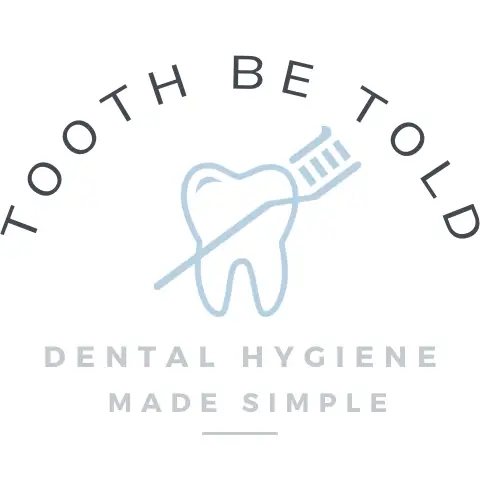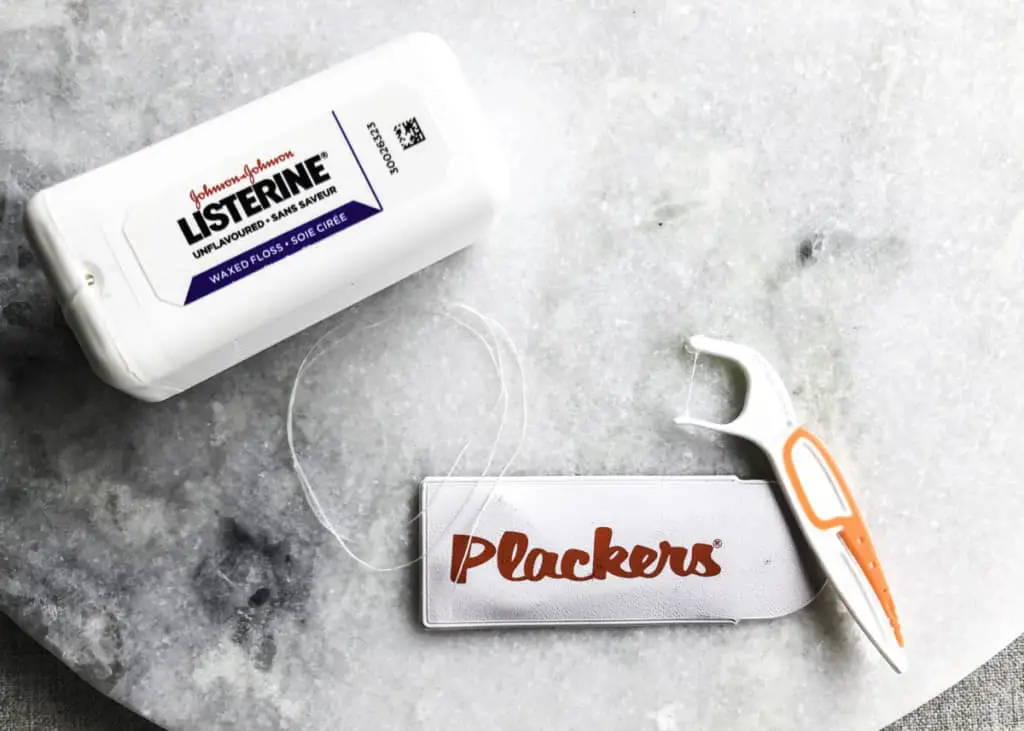
Reaching for floss picks can be an easy way to floss our teeth, I know I’d rather not always put my fingers in my mouth to floss them. But a question I get from my patients a lot is, are floss picks as effective as regular string floss/tape?
Floss picks, such as Plackers, perform similar to string floss but have a higher chance of damaging gum tissue. They do encourage healthy habits as people find them easier to use and help build a habit of flossing. Using floss picks are more effective than not flossing at all.
I will always encourage my patients to do what is best for them, and what will work for them to keep them flossing consistently. I would rather see someone floss every day with floss picks than a couple of times a week with string floss. However, I do think string floss is the better option as it is better for the environment and prevents more damage to the gum tissue.
In this study , string floss and floss picks were put head to head to see which one removed more dental plaque. Floss picks were deemed to be as effective as traditional string floss.
, string floss and floss picks were put head to head to see which one removed more dental plaque. Floss picks were deemed to be as effective as traditional string floss.
What is the difference between floss picks and traditional string floss?
Using floss picks are still a great way to maintain good oral health, but I would still rather see my patients using string floss instead. And this is for a couple of reasons.
With string floss, you can switch from a dirty section to a clean section of floss.
Also with proper technique, string floss can be contoured around the tooth in a c-shape more so than floss picks. Think of the floss hugging your tooth.
With floss picks, the amount of floss is limited and is pulled tight, not allowing much movement in the floss. Because you can’t wrap the floss pick as well around the tooth, it can put a lot of pressure on the gum tissue, which can lead to floss clefting.
Floss Clefting
Floss clefting is when indents in the gums happen where the floss is repeatedly forced down right on top of the gums. Over time it can leave a permanent mark. No pain is usually felt with this type of floss injury, but it should be avoided as it can contribute to the gum receding.
Floss clefting when mild will go away with time when the repeated injury stops, and that comes with proper flossing technique.
Floss pick technique
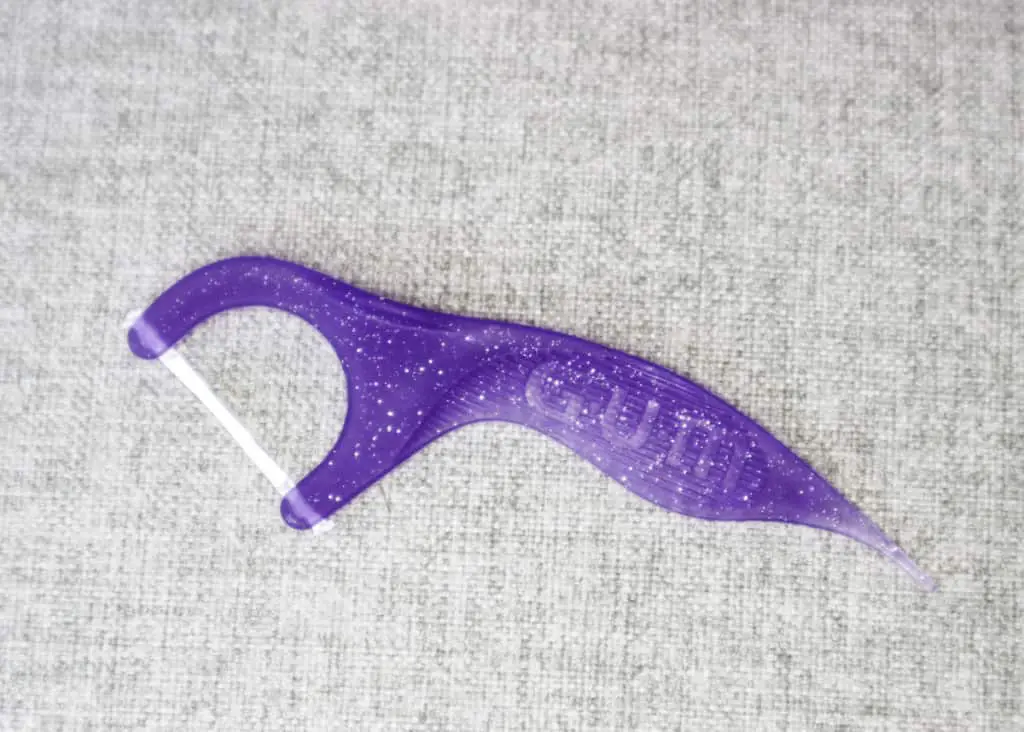
Using floss picks can be pretty easy, but even when I’ve used them on my teeth, sometimes I can’t help but slam the floss into my gums.
To avoid floss clefting/damage when using floss picks;
- Try and ease it through where the teeth meet to avoid the floss from snapping down on the gums hard.
- Pull the floss tightly against one side of the tooth to wrap it, so the floss hugs the tooth as much as it can.
- Go up and down along the tooth a few times, allowing the floss to go underneath the gumline, then back up the side of the tooth.
- Repeat on the adjacent tooth.
- Remove the floss between the teeth and go to the next teeth.
- Be sure to clean in between all the teeth, and don’t forget the back surface of the very last tooth.
Tip: When you remove the floss from in between the teeth, take a look at it. If there is food or visible plaque, rinse the floss under water to remove it, so it doesn’t get transferred to the next area that is flossed.
Traditional string floss technique
Flossing with regular string floss can take a little bit of getting used to, and the technique is important to get the best clean! Here are the steps;
1. Take a piece of floss that is about the length from your fingers to the inside of your elbow.
Depending on how tall you are, you may need a little less, or a little more than that.
You can see in the photo how much string floss I use.
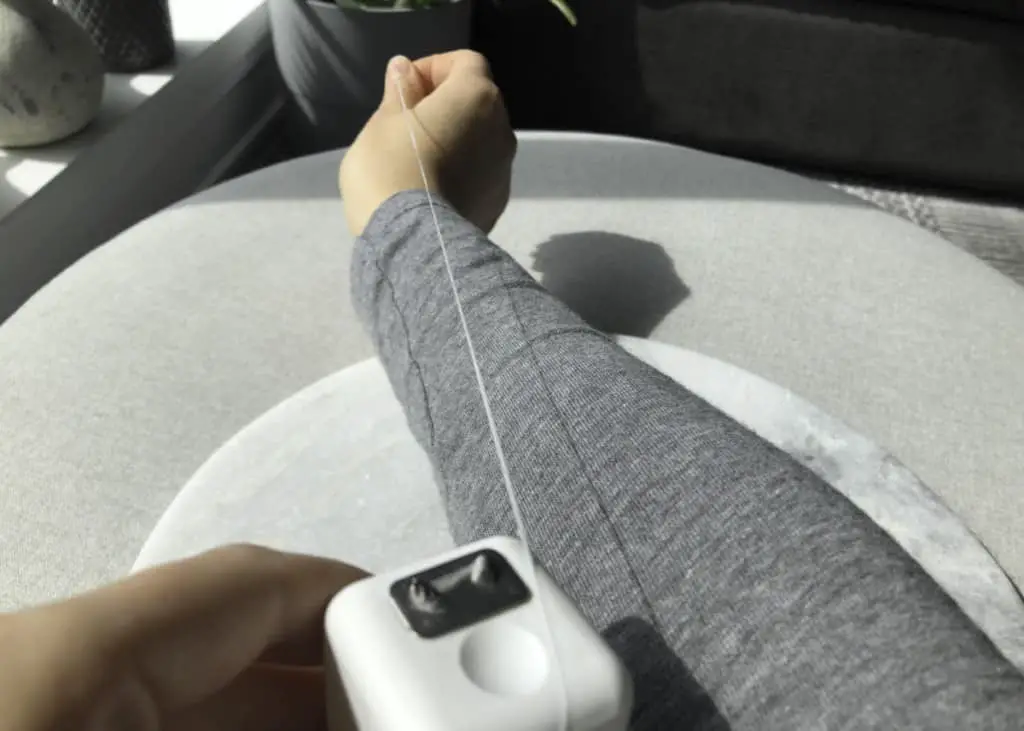
2. Wrap one end of the floss around one of your middle fingers until you have a hands length of floss left that is unwrapped.
You want most of the floss on one of your fingers because this allows you to wrap up the section of dirty floss, and unwrap a new clean section of floss when you begin to floss.
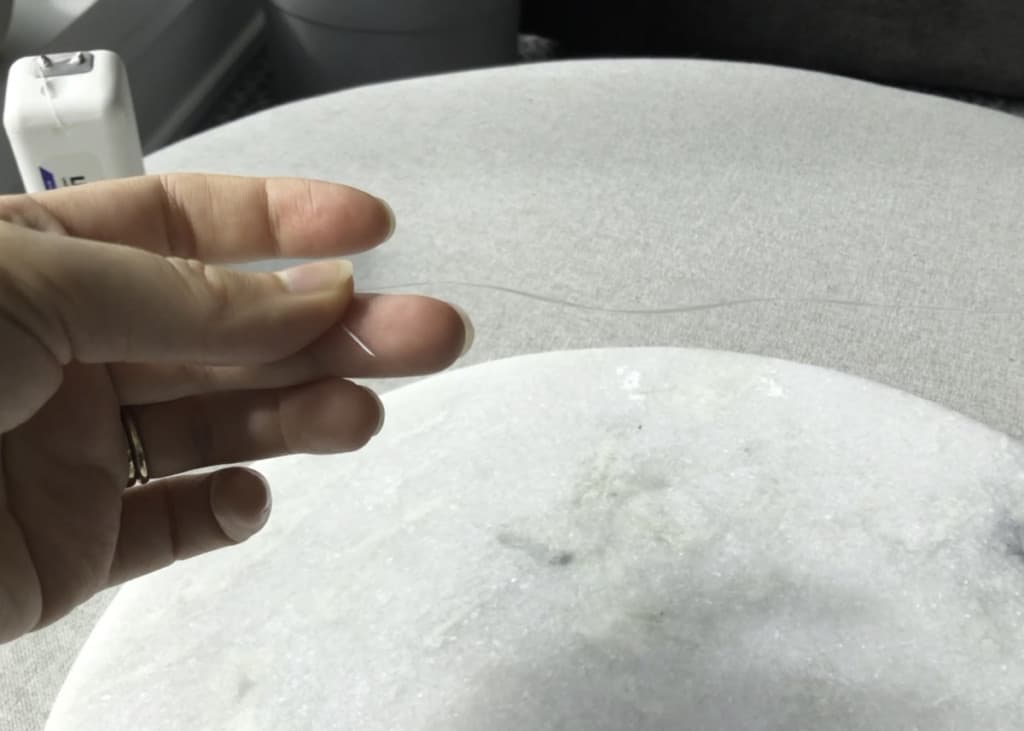
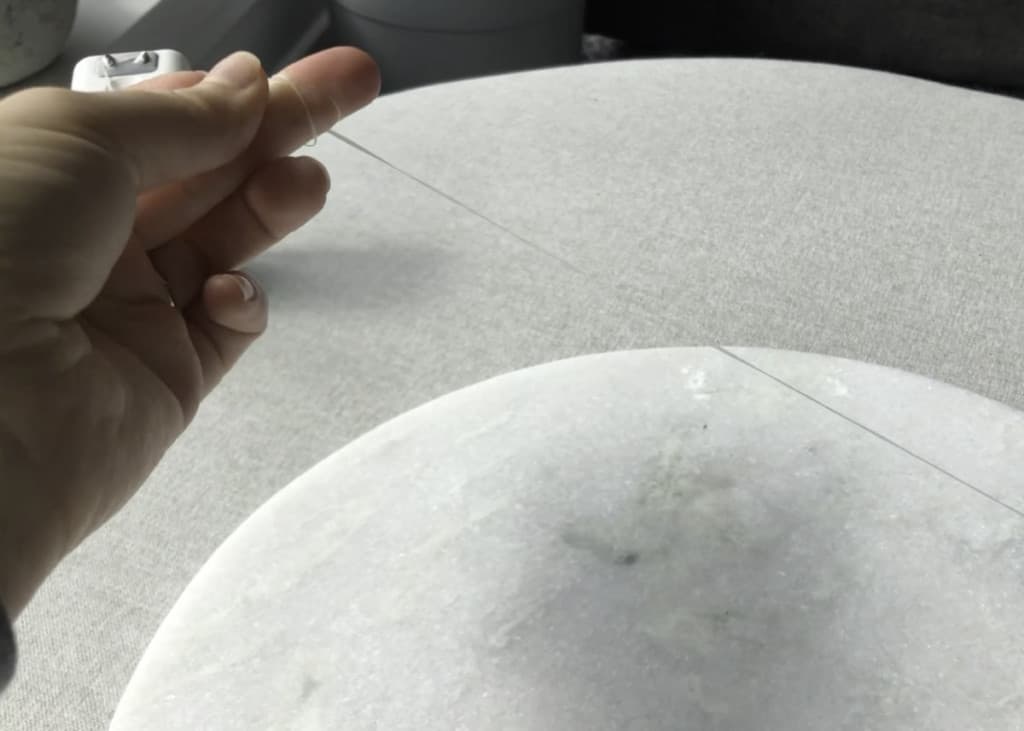
3. Wrap the end of the remaining floss around your other middle finger.
Leave a few inches of floss unwrapped between the fingers, this section is the floss that will be used to floss the teeth.
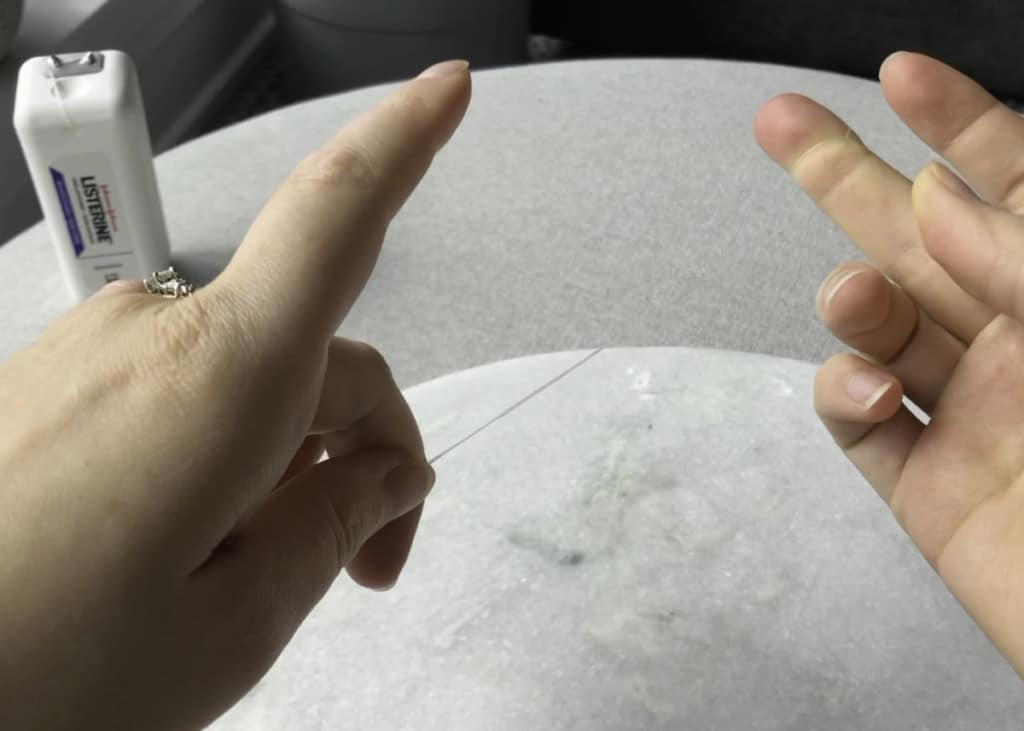
4. Once the ends of the floss are wrapped around the middle fingers, your pointer finger and thumb will be free to pinch the free floss in order to manipulate it around the teeth.
You should have a few inches of unwrapped floss between your middle fingers.

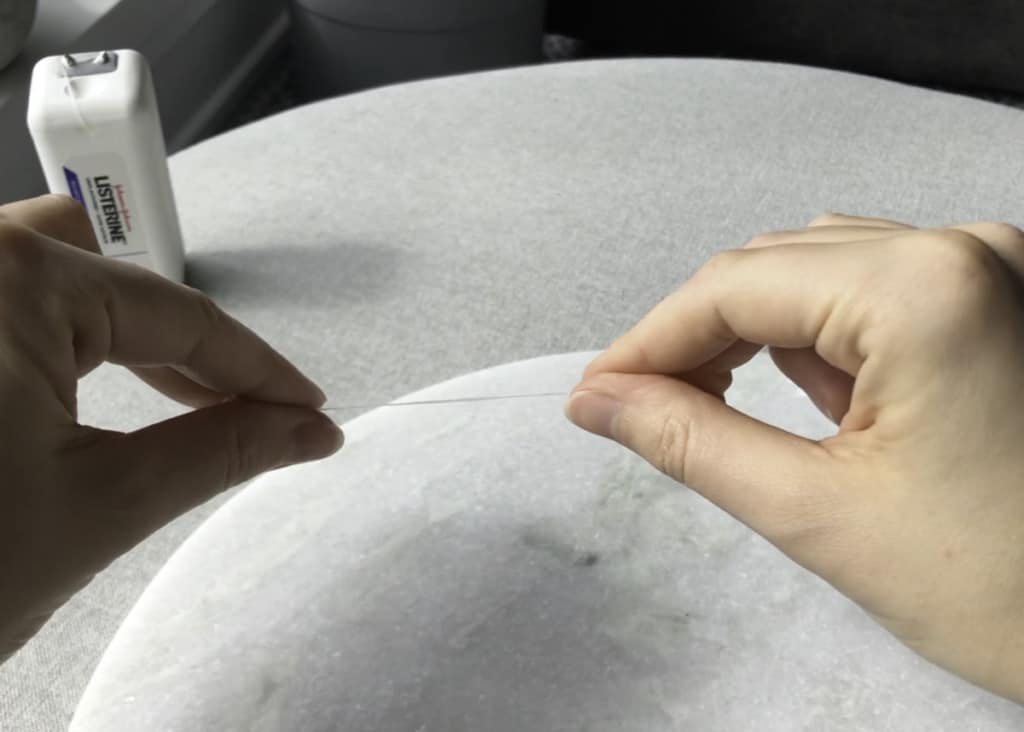
You can see in the pictures below that the thumbs and pointer fingers can control the floss well, and gives a wider range of motion than wrapping it around the pointer finger would.
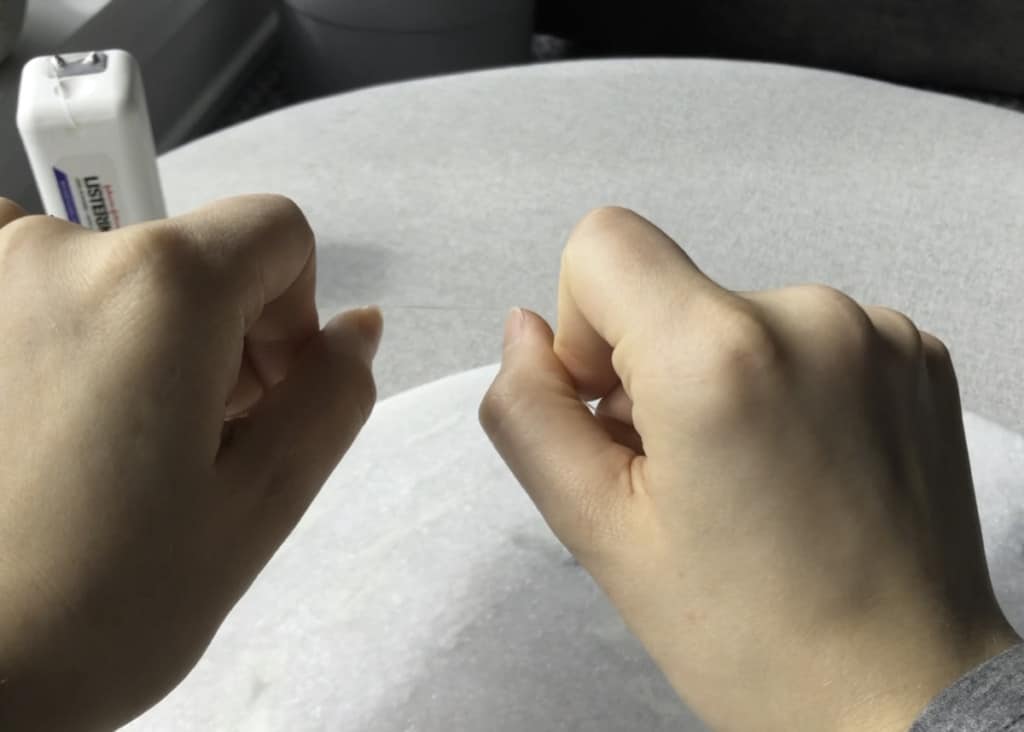
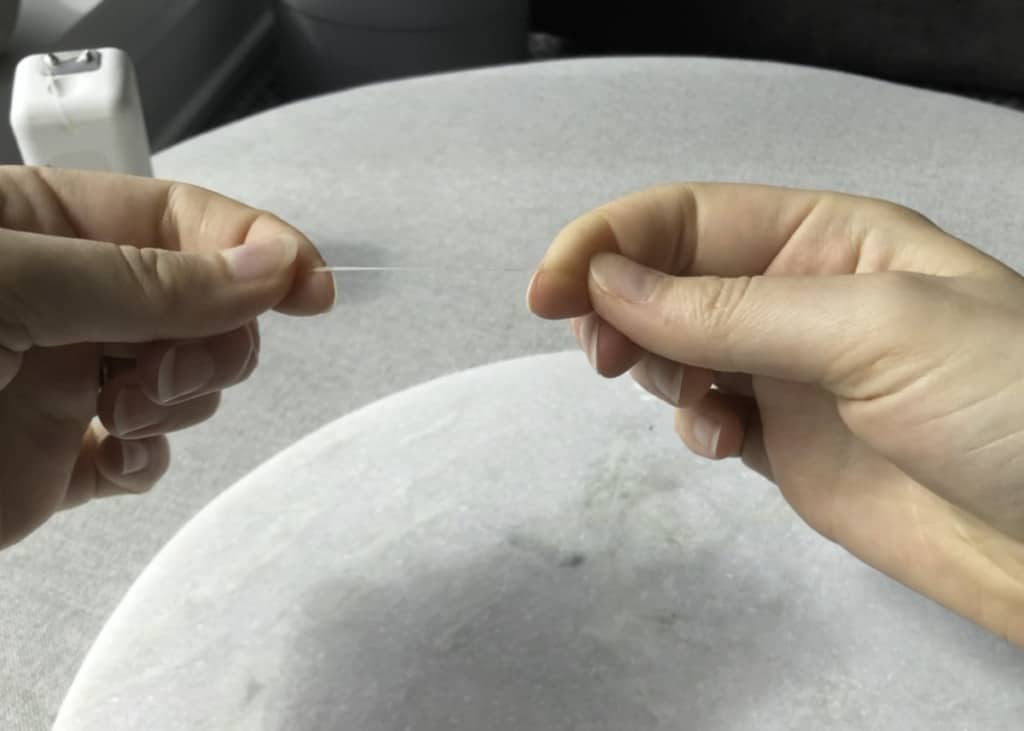
A common mistake made is wrapping the floss around the pointer finger. Doing it that way is still okay, but it won’t be as effective so try to wrap it around your middle finger.
5. You can then start to floss your teeth!
Remember to gently insert the floss to avoid floss clefting, and hug the floss tightly around one tooth, and move up and down along the tooth, ensuring the floss is going underneath the gumline. Floss the adjacent tooth and remove the floss from in between the teeth.
Check the floss to see if there is visible plaque or food. You can rinse it off underwater if need be. As you go along flossing in between all the teeth, you can wrap up the dirty sections of floss and unwrap a clean section.
Repeat on every tooth, once a day. 🙂
Does floss work for everyone?
Sometimes floss needs to be used in conjunction with another interdental cleaning tool. If gum tissue and bone are lost between the teeth, the spaces between the teeth are no longer filled with the gum tissue and bone, leaving a larger space where food and bacteria can accumulate.
As well, some people have limitations to their mobility and dexterity where holding a toothbrush can be difficult. Finding ways to modify toothbrushes or floss devices can make oral hygiene much easier.
Related post: 19 Ways to Modify Your Toothbrush If You Have Arthritis
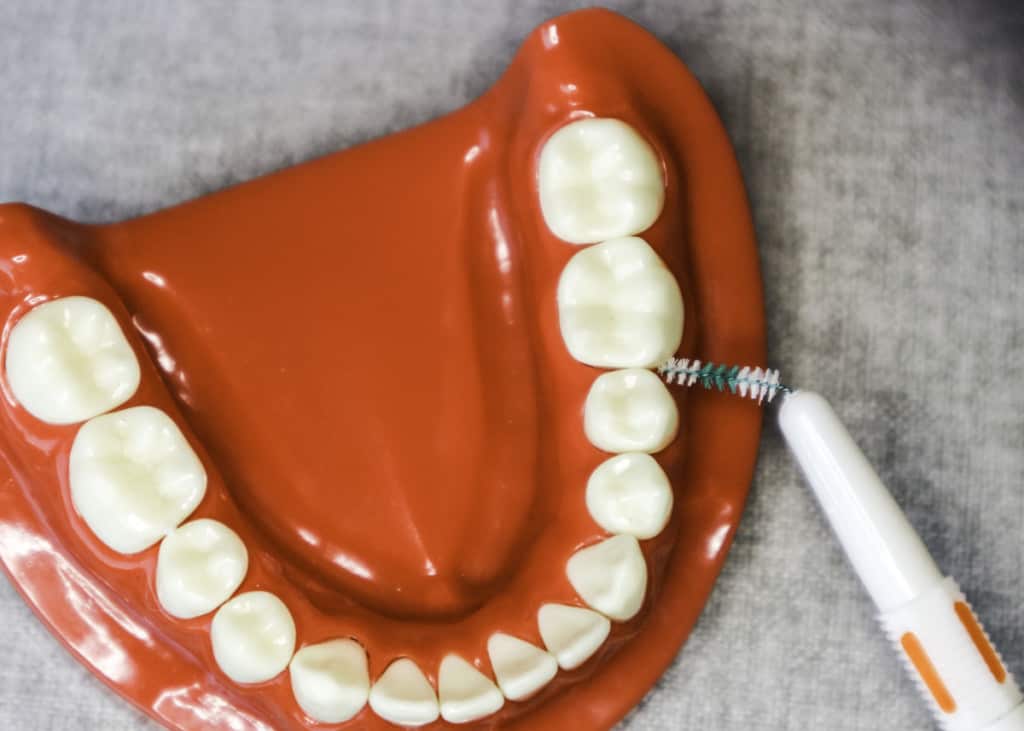
This is where interdental brushes are extremely effective, pushing out the food and bacteria, doing more than floss would on its own.
What happens if you don’t floss at all?
When the bacteria underneath the gum is not disrupted and removed on a regular basis, the bacteria doesn’t stop accumulating.
Our body’s immune response sees all these bacteria as an intruder and wants to remove it from the body.
When so much bacteria has accumulated they start to change and release toxins into the gum tissue and eventually the bone tissue.
Because our body wants to get rid of the bacteria and the toxins they are releasing, more blood is sent to the area in order for the white blood cells to kill off the bacteria. Because there is more blood, the gums become puffy and red, and they bleed easily.
This is why I think that everyone should be using an electric toothbrush if they can because they help to remove more plaque and reduce gingivitis. And when used with floss, good oral health is much easier to achieve. Read the below article to find out how effective and amazing they are!
Related post: 12 Benefits of Using an Electric Toothbrush
If the infection is only in the gum tissue, it’s called gingivitis, and when it involves the bone tissue its called periodontal disease, and often referred to as gum disease.
When gum disease is present, more harmful bacteria enter the bloodstream and can contribute to many severe medical conditions including;
- heart disease
- chronic inflammatory diseases such as rheumatoid arthritis
- effects on pregnancy – low birth weight and preterm birth
- diabetes
- bacterial pneumonia
- bacterial endocarditis
- Alzheimer’s
You can read more about the effects of oral health on the body here in this study. 
What is the best type of floss to use?

The best floss to use is a rope floss. Tape floss is still a good option, but because it is more smooth, it doesn’t grab and hold onto as much bacteria to remove it.
However, some teeth are just so tight together that rope floss just won’t work, and if too much force is applied, the floss can cut the gum tissue and cause clefting.
What about GUM Soft Picks and other interdental cleaners instead of flossing?
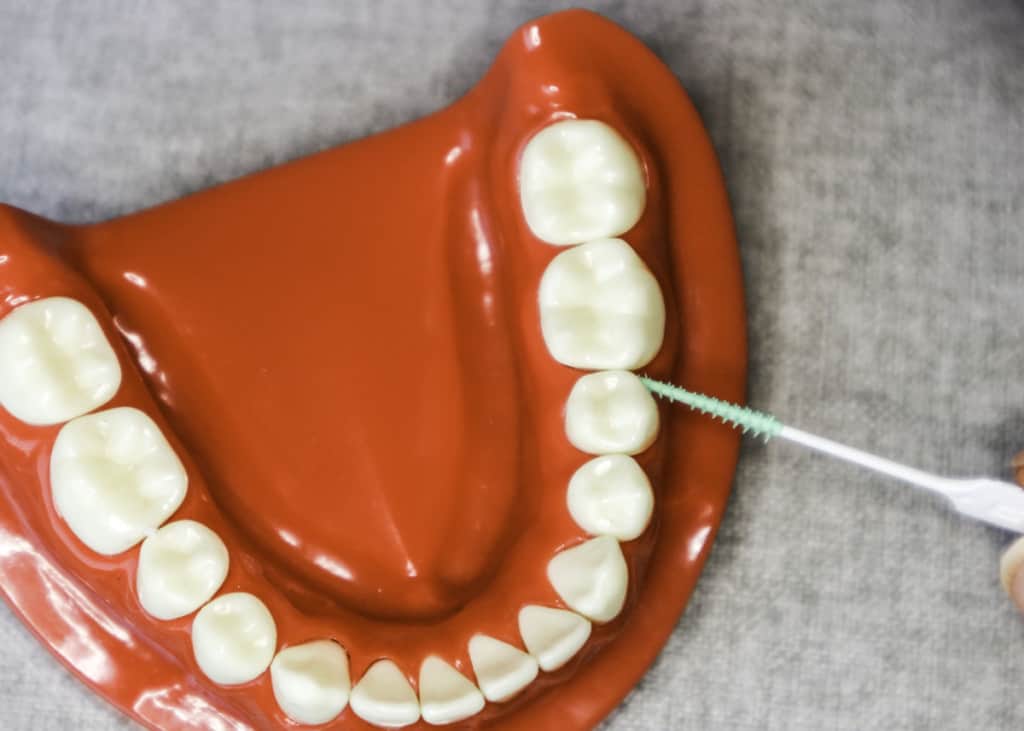
Doing something rather than nothing is always better, in my opinion. I love Soft Picks, and they are great for people who have fixed dental work such and implants and bridges, and great for people with reduced dexterity.
Like I was talking about earlier on in this post, sometimes interdental cleaners will provide a better clean than floss alone. For people who are not able to manipulate dental floss well, and have limitations in dexterity, using another type of interdental cleaning device can make a huge difference and drastically improve oral health.
Holly 🙂
